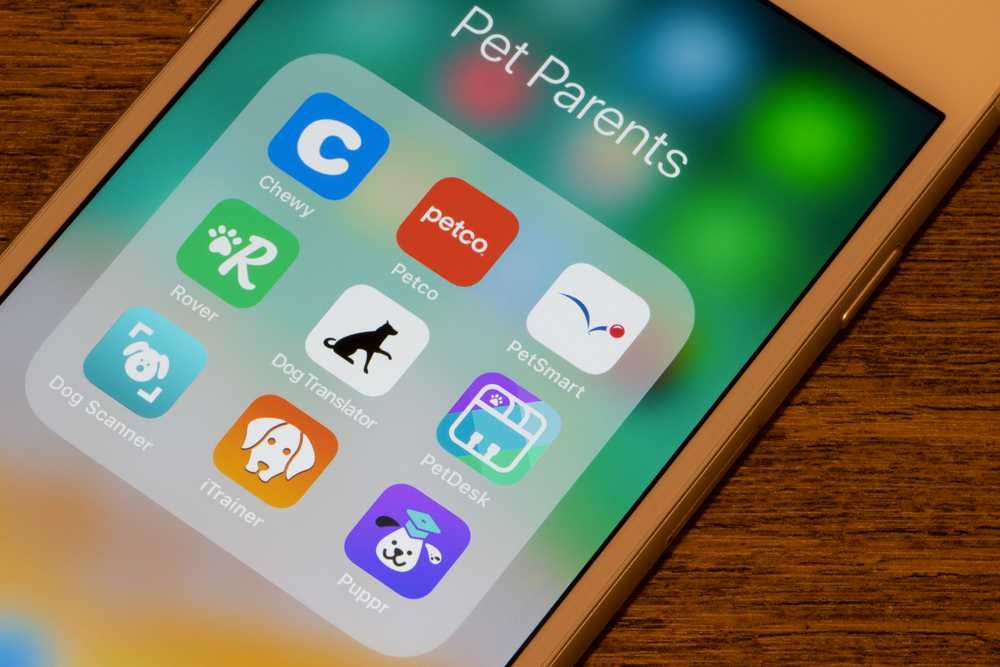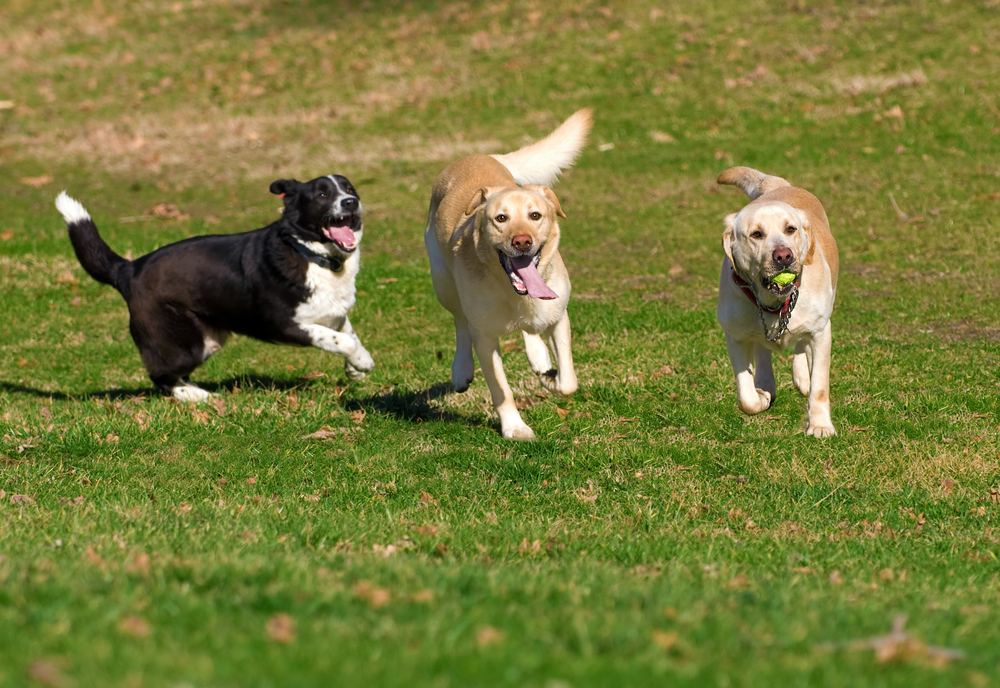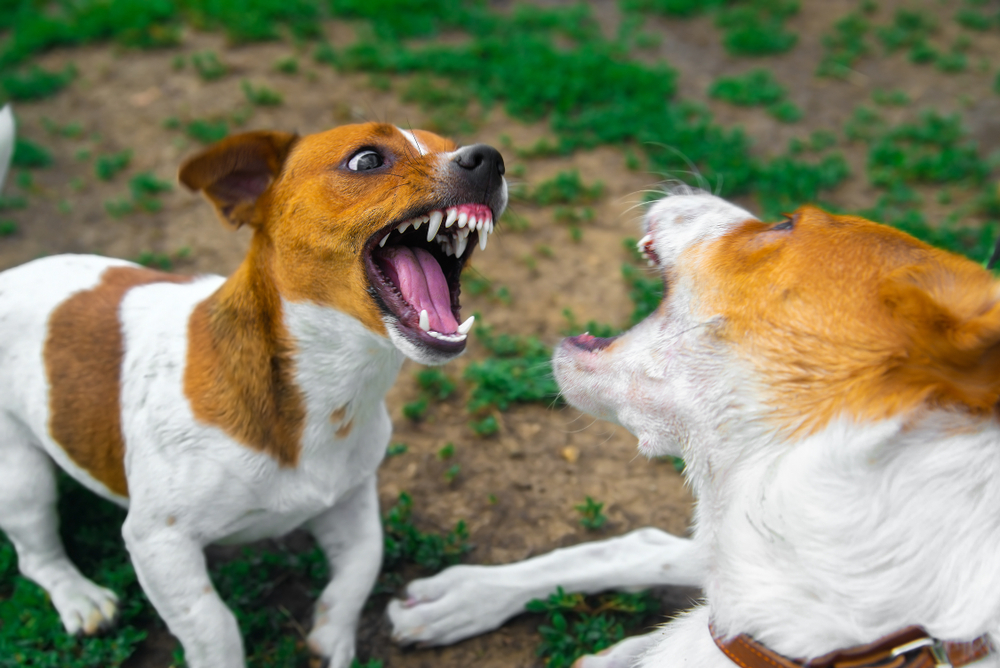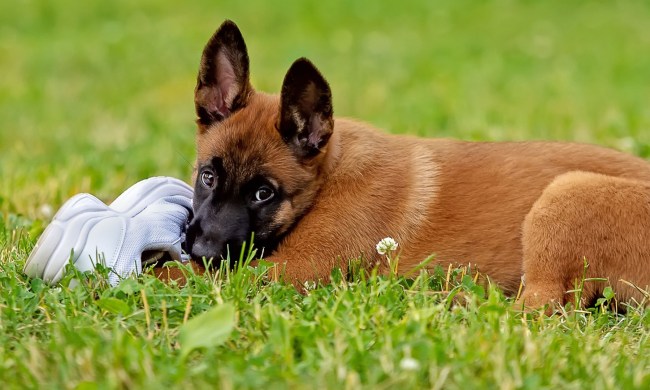For dog owners without a fenced-in backyard, a local dog park offers a chance for your canine companion to run around off-leash, get exercise, and socialize with other dogs. Before and during your next visit to any dog park, as a pet parent, there are definitely some considerations and precautions you should take into account.
While local laws and dog park rules vary greatly by location, it’s up to responsible dog parents to learn what’s required and make sure their dog meets or exceeds those requirements in terms of vaccinations, age, size, and training, before attempting an off-leash experience at a local dog park.

How to find local dog parks
Use these free websites and mobile apps to help you find dog parks and off-leash areas across the United States:
- Using Google Maps or Apple Maps, simply type “dog park” into the Search field to quickly discover the closest public dog parks to your current location.
- The free Sniffspot mobile app and website maintains a comprehensive database of private dog parks and off-leash areas. This app offers user reviews of dog parks, details about each facility, and location photos. It also lists admission prices, when applicable.
- The Paw Parks mobile app for iPhone offers a listing of dog parks, complete with descriptions, amenities listings, and photos.
- The Bring Fido website includes a listing of dog parks and off-leash areas.
- Visit the Nylabone website and within the Search field, enter your zip code to find public dog parks or dog-friendly parks and public spaces within a pre-determined geographic radius that you define.

Preparing for a visit to a dog park
Before you even consider bringing your dog to a dog park, make sure they’re properly vaccinated, protected against fleas and ticks, licensed in your city or town, and that they’re trained enough to know and respond to the appropriate command(s) when called.
Mary R. Burch, Ph.D., is the family dog director at the American Kennel Club and a certified applied animal behaviorist. She suggests, “It’s never a good idea to bring a puppy who is younger than six months old to a public dog park, as they’re unpredictable. Overly excited adult dogs don’t always know how to handle being around them when they’re off-leash.”
To get your puppy ready for a dog park visit, Burch suggests:
“Start by getting the okay from the puppy’s veterinarian. This will involve all necessary vaccines before your puppy is exposed to other dogs. Know that many veterinarians will suggest waiting until young puppies are older before visiting dog parks.”
Each individual dog is different. Burch adds, “There might be differences regarding what a veterinarian will recommend depending on an individual puppy and its health. In general, puppies should have completed their vaccines, including core vaccines for Parvo, distemper, adenovirus, and rabies. Depending on where you live and the recommendations of your dog’s veterinarian, other vaccines will be leptospirosis, Bordetella, Lyme disease, parainfluenza, or canine influenza.”
Pet parents who have not already had their dog spayed or neutered, who know their female dog is currently in heat, and who have not previously socialized their dog with others in a supervised environment (such as at a licensed doggy daycare or dog training facility) should think twice about letting their dog off-leash at a public dog park. If your dog shows any sign of illness, they should also be kept at home.
Once you find the dog park you plan to visit, make sure there’s a designated area based on the size of your dog (especially if you have a small dog). Unless you know all of the dogs and pet parents visiting a dog park at the same time as you, for safety reasons, it’s never a good idea to mix small-, medium-, and larger-size dogs together in an off-leash setting.
As you’re preparing for your visit, make sure you bring along:
- Your dog’s leash/harness with dog tags that display your contact information (in case the dog escapes from the dog park and wanders off)
- A ball or toy that you (and your dog) won’t mind losing
- Treats
- Disposable poop bags
- A portable water bowl with a fresh bottle of water (A communal water bowl could allow the dogs to share diseases, parasites, or harmful bacteria.)
- A canine first aid kit

What to look out for at the dog park
When you approach the dog park, make sure it’s not already overcrowded. Ensure that all of the dogs are being closely supervised by their respective pet parents. Look for signs of a dog who might be overly aggressive or who could make your dog become afraid or feel uncomfortable.
According to Burch, “Any signs of aggression from other dogs, such as growling, snapping, biting, or fighting, are a clue that the dog park is not safe. You should remove your dog from the situation.”
She also recommends avoiding other dogs that exhibit these behaviors:
- They constantly chase your dog and won’t stop.
- They attempt to pin your dog into a tight space (such as under a bench).
- They attempt to mount other dogs.
- They use force to pin other dogs to the ground.
- They body slam into other dogs in an aggressive (not playful) way.
Keep your dog on their leash until they’re safely inside the fenced-in dog park area and they’ve had a chance to meet and interact with the other dogs. Once you’ve determined the area is safe for your dog, remove their leash.
It’s always your responsibility to keep a vigilant eye on your own dog at all times. Don’t allow them to simply run off and be unsupervised while you focus on using your smartphone, socialize with other humans, or read a book. It may be necessary for you to quickly intervene if your dog’s socialization with other dogs becomes overly aggressive or potentially dangerous. Anytime you see signs of a potential problem, call your dog immediately and remove them from the area.
If you’re not familiar with your dog’s body language and how they react when they’re happy, playful, afraid, or angry, this is definitely something you want to work on with a certified trainer before visiting a dog park since you want to be able to predict and analyze your dog’s behavior when they’re running around off-leash and surrounded by other dogs. Two or more dogs can transition from a friendly encounter to an angry or violent encounter in three seconds or less, so you need to be prepared and know the signs to watch for.
While hopefully, you’ll never need it, carrying a canine first aid kit with you will help ensure you’re prepared if your dog gets injured or attacked. Priced at $24.95, the Med Packs Pet Medic canine first aid kit from My Medic is lightweight and portable. It includes the supplies you may need in an emergency. It’s also a good idea to pre-program the name, address, and phone number for the closest animal hospital into your phone.
Important etiquette during your visit
The following are ten general guidelines to follow while visiting any dog park or off-leash area:
- Always follow the rules posted at the dog park you’re visiting.
- For the first few visits to a new dog park, visit during off-peak, less crowded times, so your dog can get used to the new environment without being inundated with exposure to a lot of unfamiliar dogs.
- Avoid bringing your dog to a dog park at night, even if it’s technically open.
- Remove your dog’s choke collar, clothing, or any other equipment that could injure your dog or the dogs they wind up playing with. (Leave a regular collar with dog tags on your dog.)
- Every dog owner visiting a public dog park is responsible for cleaning up after their own dog. Whether this rule is posted on signs or not, it’s expected. Failure to clean up after your dog is not only rude, but it will quickly cause you to earn a negative reputation in the local community.
- Most dogs will get tired after 30 to 60 minutes running around off-leash and socializing with other dogs. Watch for signs of fatigue. Take your dog home before they get overly exhausted, too socialized, or become frustrated. Plan on your dog needing a nap after each dog park visit, so schedule accordingly, and check them carefully for ticks when you get home.
- Don’t feed other dogs food or treats without first obtaining permission from their pet parents.
- As for you, the pet parent, even though you’re outside, pay attention to COVID-19 restrictions in your area and wear a mask if it’s still being recommended or mandated. You might also want to ask other humans to avoid petting your dog.
- Avoid bringing young (human) children to a dog park for their safety.
- If your dog misbehaves, take control of the situation quickly and apologize to the other pet parents.
“I think my biggest pet peeve when it comes to dog owners at dog parks is when the owners assume dogs will exercise themselves, and the humans treat the visit as a break for themselves,” Burch says. “They will sit and read a book or answers emails on their phones, not paying any attention to their dogs. This sets the stage for trouble, especially if there are dogs present who are playground bullies. If there is any trouble, as minor as one dog mounting another, owners should intervene and not think dogs can work it out on their own.”
Remember, scary or negative experiences at a dog park could cause dogs — especially younger dogs — to become fearful of other dogs or public dog parks for the rest of their lives. Be a responsible pet parent and take the precautions necessary to ensure a happy, fun, and safe experience during each visit.
Burch adds, “For both puppies and adult dogs, make sure your dog has been socialized around people and other dogs before putting it in a situation with a lot of other dogs who are off-leash. Otherwise, the dog park can be a traumatizing place.”
Ultimately, you are legally responsible for the actions of your dog related to other dogs and humans. If you see your dog isn’t handling the off-leash dog park experience well, consider pursuing additional training with a certified dog trainer before bringing your dog back to a dog park.



